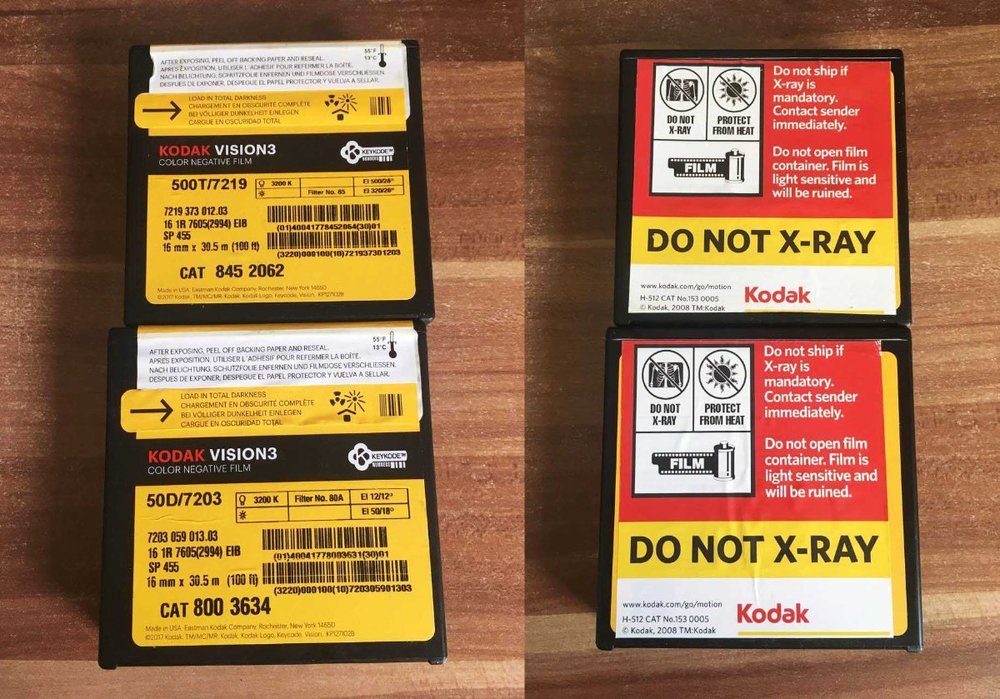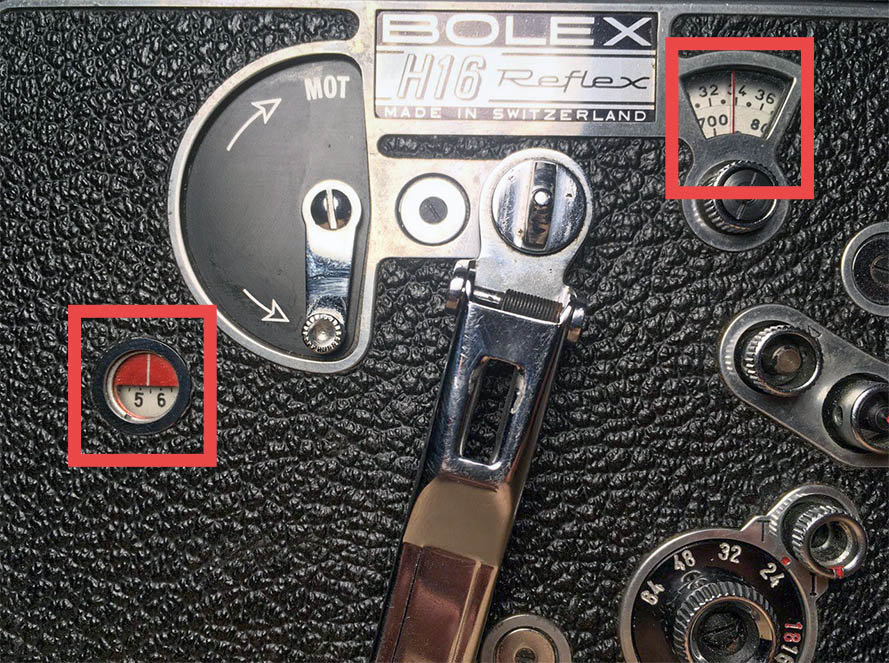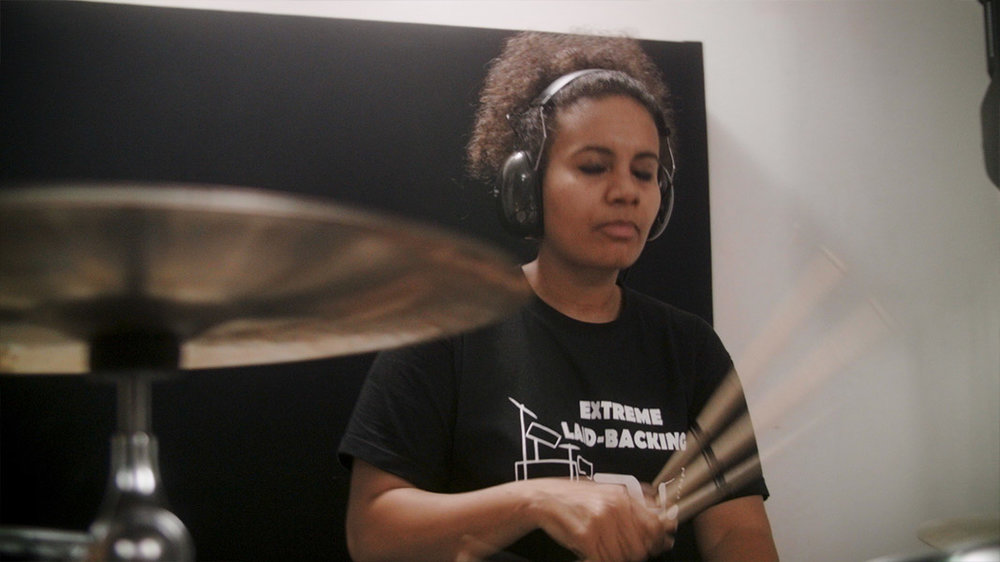-
Posts
118 -
Joined
-
Last visited
Everything posted by Daniel Meier
-
Me and my workmate often have this discussion about what density of diffusion filter to use on certain focal lengths on a two camera shoot. He thinks that higher density filters need to be used on wide angle lenses, whereas less dense filters need to be used on telephoto lenses. To make the shots match in the editing. I would claim the exact opposite. Use a denser filter on telephoto and a less dense one for wide angle shots. My theory is that wide angle shots often tend to look to creamy and lack sharpness when combined with heavy diffusion filtration. Hence my gravitating towards lighter filters on wide shots. Plus the heavier diffusion on close ups benefits the rendition of skin (especially in the age of 4K resolution). What are your takes in this topic? What is the traditional/common way to use diffusion filters on different focal lengths?
-
Hey guys. I am looking into buying a new/used lightmeter for outdoor shooting (super8/16mm). I used to go with the Sekonic L-308 and I loved everything about it. But I lost two of them in the past. So I'm kind of over investing in another one of those. My question is: Is there a more affordable meter out there that has similar specs and features? I only need it to measure incident light. I don't need reflective metering. No flash metering, doesn't have to be digital either. Lux/FC reading would be nice to have but it is not a must. The Sekonic L398 caught my attention. But I am a little afraid of incorrect usage due to the hectic situations I will be using it in. I will mostly shoot documentary style outdoors. And I need to quickly measure and dial my f-stops to capture the moment. Have a nice day, ya'll
-

converted Meike 3.5mm m4/3 to cmount for Bolex
Daniel Meier replied to Allyn Iwatsuru's topic in Lenses & Lens Accessories
Any chance of giving us a manual on how to build the adapter? Or even better: did anyone figure out a 3D model yet? I would love to have one if these Frankenstein-Adapters. -
Wow Allyn this looks amazing. Thanks for sharing. That is excactly what I am looking for. Could you imagine modding this for me? Of course I would cover all expenses and shipping. Here's my mail so we could have further conversation outside off the topic: daniel@framefive.de
-
Thanks Robert and Dom for your help. Where else could I get hold of a wideangle lens for the REX 5? I already have a 10mm but I want to go even wider. Nowadays on the web I can't seem to find anyone selling a Century 3.5mm or a 5.7mm. Are there any other options out there on the market to go lower than 10mm on the Bolex H16 these days?
-
I'm planning on getting this lens (mainly for my BMPCC): https://www.bhphotovideo.com/c/product/1022991-REG/kowa_lm6hc_c_mount_6mm_f_1_8_16_1.html/reviews I also wonder if it will get me a usable image on my Bolex Rex 5. Maybe some of you can tell from the specs. Maybe some of you even used it before. I am aware of the terms "RX- and Non-RX" lenses. But haven't yet dived too deep into topic. What is the downside of using this particular Non-RX lens on the Rex?
-
I don't know the exact expiration date of the film stocks. I purchased a bunch of stocks along with the camera, back when I got it from an ebay seller. But I think it should be fine, since the copyright says "2017". Maybe you can tell better from the photos I made?
-
Sorry for the late response. I was on vacation. Thank you for all your replies. It helped a lot. I did a test with a mini LED flashlight. And I quickly found out that a missing screw caused the light leak to happen. I remember that the turret lock screw broke. So I decided to get rid of the mechanism at all, since I would still use the Turret Plug to keep the turret from spinning. Now I screwed everything back in - except for the silver part that is supposed to lock the turret. This one can't be tightened anymore due to the missing screw (which is broken and half of it got stuck inside the thread). The attached image should help grasping.
-
I've aquired this camera about two years ago. Shot two rolls of 100ft and everything looked fine. Last fall I started shooting my 3rd roll of film. This time I went for 500T stock. When I got it back from the lab and scanning, it had these really nasty light leaks. (Starting at 0:53 in the YT link) https://youtu.be/3_QMzjQ5GLs I shot the first third of the roll in Paris. Then went back to my home (Germany) and that first shot I took there had this light leak thing going on. I took it some days after I came back from Paris. Now I am wondering about the cause and the root of the issues. Did the camera got damaged during transportation? Is it just a regular light leak happening because the camera wasn't sealed good enough? Did any of you experience similar effects? And what about those 10 frames of white happening every 5 frames after a new shot. I didn't change anything on the camera, except for lenses. Always kept the slide filter in with some 85B filter. To balance the 500T for daylight. The only other thing that changed is how I store the camera, when not shooting with it (but film still being loaded in it) The shelf where the camera sits now has a decent amount of top-light (LED). But I also made sure that there is no light coming in from the top compartment of the camera, where a 400ft mag could be installed. I spent about 210€ for developing and scanning only. Can't afford this to happen again ? Would be very pleased to hear your experiences.
-
I want to power a couple of my LED Panels (https://www.bhphotovideo.com/c/product/1316114-REG/yongnuo_yn1200w_yn1200_led_video_light.html) for filming skateboarding outdoors. Would you recommend using an inverter generator for that purpose or can I use a regular (cheaper) standard generator for that matter? I am pretty new to the world of gennys. So I have no idea if a simple LED light such as the Yn-1200 falls under the category of voltage-sensitive electronic devices such as laptops or computers, that obviously should only be powered with inverter generators, to avoid damage. I was also wondering about the difference of using regular tungsten lights with a genny. Do they handle voltage variations better than LED (are they studier in that concern)? Would be great to get a little insight here.
-
That makes perfect sense. Thank you Jean-Louis! Wouldn't have thought that they'd use the metric system.
-
I am still pretty new to this camera. And I was wondering what the footage counter indicates. So I took a look in the manual. The lower left indicator shows, how much feet have advanced through the camera, right? So if I have a 100ft roll in the camera it should advance up to 100ft. I shot 24fps all the way so far. According to this photo, I already exposed 6ft of film, right? But then again, the frame counter indicates roughly 730 frames. Does this make sense? I put these figures through a calculator and it actually should read something around 18ft. Which makes more sense, because I filmed for about 30 seconds so far.
-

Bolex Rex 5 - Infinty Focus and Parfocal Issues
Daniel Meier replied to Daniel Meier's topic in 16mm
Any ideas, what the problem might be here? -

Bolex Rex 5 - Infinty Focus and Parfocal Issues
Daniel Meier replied to Daniel Meier's topic in 16mm
Tried both lenses on my BMPCC4K today using the Metabones C-Mount to MFT adaptor. Both worked great. The 18-86mm was nearly 100% parfocal on the BMPCC4k. And I could focus even past infinity on the 10mm. Must be a misalignment in the Camera then, right? -

Bolex Rex 5 - Infinty Focus and Parfocal Issues
Daniel Meier replied to Daniel Meier's topic in 16mm
Like I said, I already checked the diopter settings multiple times. -

Bolex Rex 5 - Infinty Focus and Parfocal Issues
Daniel Meier replied to Daniel Meier's topic in 16mm
That's a good idea. Although I think the lenses are ok. But they might make a good fit on my BMPCC4K. -
Dear community. I recently got me a Bolex Rex5 camera. The set included two lenses. The Kern Vario-Switar 18-86mm/f2.5 zoom and a Schneider Cinegon 10mm/f1.8 prime lens. It seems like the focus of the 10mm won't reach to infinity. Here is a video demonstrating that: https://vimeo.com/426998946/3241902a4f The zoom lens also gives me trouble keeping focus throughout the zoom range. A Bolex user (Ben Ericson on this forum) told me that his 18-86mm is parfocal. On my camera it doesn't work as a parfocal lens. Here is also a video demonstrating that: https://vimeo.com/426999919/166835a0f8 Things I already tried troubleshooting: - checking multiple diopter settings of my viewfinder (making sure the groundglass is in focus - I guess you can also tell from the video samples that it is) - making sure the lenses are tightly attached on their mounts Do you have any idea what might be the problem here? Is it the camera itself that needs adjustments? I bought the set for about 1200€. The seller said that all components are in perfect conditions.
-
Me and two of my colleagues want to dive into new cinematography fields: I was mainly responsible for the lighting and DPing and did all the color grading. Please feel free to comment.
-

Lighting setup for this film
Daniel Meier replied to Tiago Pimentel's topic in Lighting for Film & Video
Great and informative thread! I would really appreciate looking into any moving picutes. Can you give us a trailer or excerpt of the film? -

Ressources on diving into Diffusion Materials
Daniel Meier replied to Daniel Meier's topic in Lighting for Film & Video
Just found an interesting article on the ASC Blog: https://ascmag.com/blog/shot-craft/diffusion-confusion -
I want to dive more into narrative books again. I've always been a very audiovisual person, when it comes to perceiving and consuming storys. So I'd like to come back to the written storys, after heaving read so many non-fictional books about lighting, photography and cinematography. Can you give me some recommendations? I know it's rather subjective. But I thought, I'd meet some like-minded people, since we are all filmmakers and visual storytellers. Maybe I can give you a little help with my favourite films and directors, that I enjoy watching: - Kitano, Fincher, Tarantino, Danny Bolye, the Coen brothers, W. Allen, Gus van Sant, Luc Besson, Spike Jonze, - nearly all of the Studio Ghibli movies and some classic anime feature films like Ghost in the Shell, - Se7en, Lost in Translation and Good Will Hunting are some of my favourite films I can watch over and over again.
-

Ressources on diving into Diffusion Materials
Daniel Meier replied to Daniel Meier's topic in Lighting for Film & Video
Thanks to all of you. That already helped alot. -
You guys know any good websites where I can learn about diffusion materials and their distinguish looks and effects? After all I want to be able to distinguish between Frost, White Diffusion, Grid Cloth, Tough Spun and the like. Some best practices or examples of usage on real lighting setups would also be warmly welcomed. Or maybe even you guys can talk about your own experiences. Cheers, Daniel
-
Thanks Tyler and Vlad for sharing your knowledge. Here are two sample frames from a Prores BMPCC shot to illustrate my green-tint-issue. https://www.dropbox.com/sh/8t78zdu3g6yhzl2/AADYjqNzZeLcfgnqP6aPaM9_a/Boz_BMDFilm_to_Rec709%20%282%29.jpg?dl=0 https://www.dropbox.com/sh/8t78zdu3g6yhzl2/AAAXq3Gsv0S8TKkkhG_PfV0pa/EOS-HD_SLOG_2_SGAMUT%20%282%29.jpg?dl=0 https://www.dropbox.com/sh/8t78zdu3g6yhzl2/AADbkFl7eQgOR9D8ie1jX9rQa/Boz_BMDFilm_to_Rec709%20%2812%29.jpg?dl=0 https://www.dropbox.com/sh/8t78zdu3g6yhzl2/AABwdT8-TPdr5mEvOje_JCgta/EOS-HD_SLOG_2_SGAMUT%20%2812%29.jpg?dl=0 I named the files according to the LUTs I've been applying to those shots. (No grading, just the LUTs being put on). As you can see the Boz BMD Film LUT has more green in the neutral parts of the image (mostly the mid-gray sections), whereas the EOSHD SLOG2 LUT results in a far more pleasing, neutral looking image. All of the usual BMPCC-REC709 LUTs give me that ugly green tint, just like the BOZBMDFilm LUT. This occurs in both situations, with and without any ND filtration. I even get better results with some heavier NDs (e.g. an ND 1.8), since it has a little magenta shift to it. I also did test the Hoya IR Cut filter, which gets hyped to death by every BMPCC user. I returned it after one day of testing, since I thought it was way overpriced for the effect it does. It fixes an issue that might just as well be removed in the grading process. I ordered the Rawlite OLPF yesterday, which also includes an IR Cut filter. But my main goal is to shoot RAW with less moiré. (Since RAW is way more prone to moirè than ProRes is on the Pocket).
- 14 replies
-
Hey folks. This is an issue I've been running into several times before: I suspect, it is due to the lighting and its refresh rate. Unfortunately I didn't check out which source that was. Might have been some cheap CFLs or LEDs. The image itself didn't have that standard flickering (where the exposure goes up and down from one frame to the next). It just had this weird double outline on things moving. You can see it best when looking at the motion blurred parts of the images.







